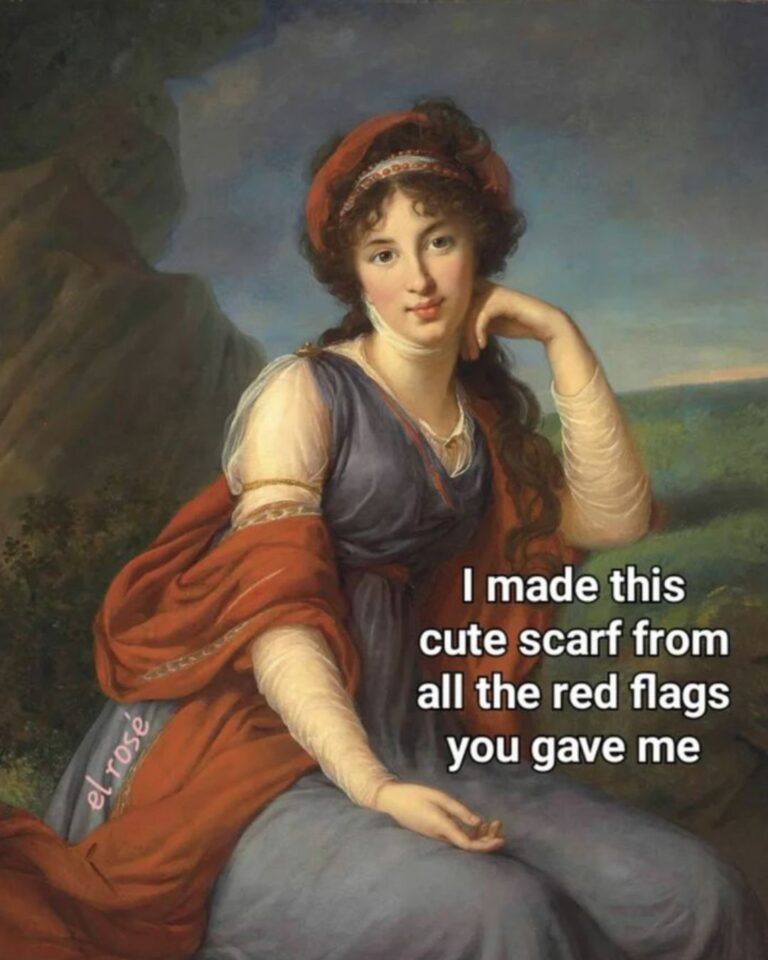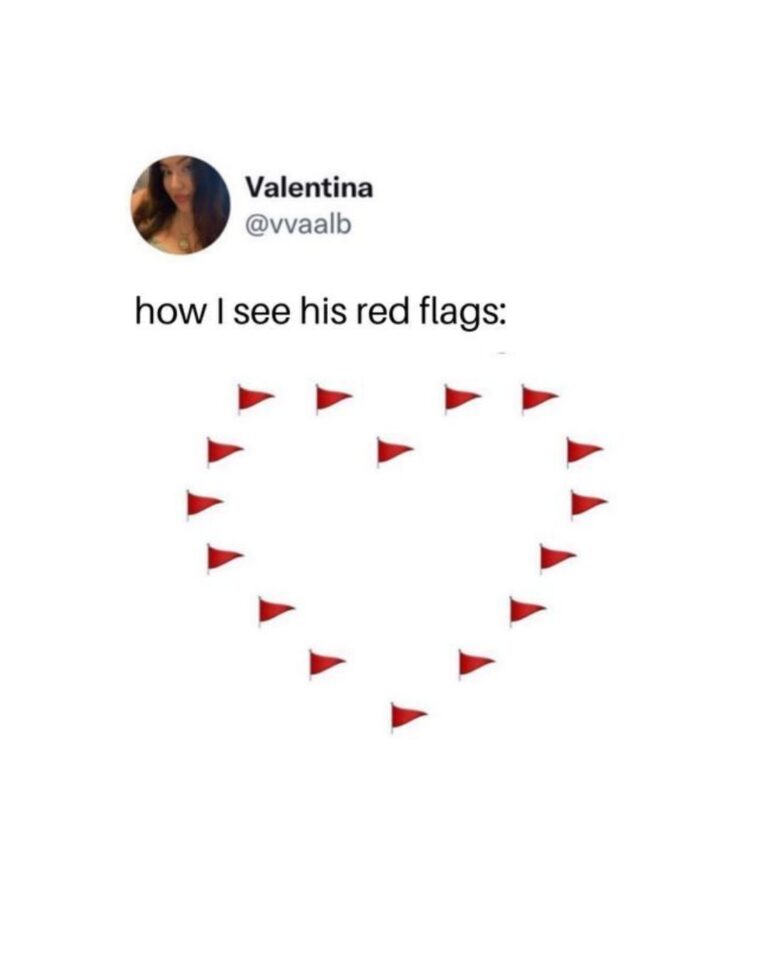Why Does GenZ Label People As Flags?
“Pineapple on pizza? A total red flag!”
“He said ‘text, once you reach home’, a MAJOR green flag!’’
Suddenly all your actions, your behaviour can be described with a colour? We have started labelling people as flags and it can baffle the most dramatic characters in classics, imagine Heathcliff throwing around ‘beige flag’ accusations. The ‘red flag’ dates back to the 18th century where it was applied in a figurative context to indicate danger and as a warning. Ships with a battling intent would display a red flag, trains were warned about upcoming disruptions in the same way. The colour red conventionally denotes a threat with a widespread use in the industrial context.
A ‘green flag’ on the other hand is a positive trait or a quality that is acceptable and desired in an ideal societal framework when it comes to dating or relationships. It could be as simple as someone remembering a small detail you told them about.

How did these terms grow so mainstream ?
GenZ’s thrive in the era of digitalization with social media being the main medium of sharing ideas, theories and facts. Labelling people as flags is an unconventionally quick and easy way of analyzing someone’s personality based on their actions. While badmouthing another person should not make you feel better about yourself, it is unfortunately observed in this case. Being validated as a ‘green flag’ or somebody telling you that ‘he/she was a red flag anyway’ and using it as an escape for a situation where you are equally at fault, is an unhealthy coping mechanism and inappropriate way of dealing with one’s own issues.
It is important to mention the term ‘Heuristics’ in this context. It is a cognitive shortcut to categorize social stimuli (here, people) into boxes like good and bad making it easy for oneself to analyze the information in the long run. GenZ labelling people as flags is a classic example of this concept.
What is a red flag ?
A red flag is the term used for identifying someone with potentially problematic and harmful personality traits that would damage a relationship irrespective of it being romantic or platonic. These are typically actions or behaviours that will be difficult to handle and could end up destroying mental health.
Some common red flags are :
- Dishonesty and being secretive
- Manipulative or controlling behaviour
- Emotionally abusive actions like gaslighting and guilt tripping
- Violating boundaries and invading privacy.
- Extreme possessiveness and constant trust issues
Pop culture plays its part well when it comes to glorifying red flags. Bollywood movies have an abundance of characters that have been hailed and ‘loved’ by the masses. This brings us to the heavily controversial movie called Animal, directed by Sandeep Reddy Vanga starring Ranbir Kapoor in the lead role of Ranvijay. A character that shows violent tendencies since childhood due to the lack of fatherly love. He is unhinged when it comes to having his way, going so far as cleverly manipulating Geetanjali (Rashmika Mandanna) into marrying him. Ranvijay clearly doesn’t care about boundaries and cannot take rejections, slaps his wife under the pretext of ‘love’ and thinks she has no right to question his infidelity. A pathetic and problematic character that is an embodiment of what a RED FLAG is.

Raanjhanaa is another such movie wherein both the leads are red flags knowingly and unknowingly. Zoya, played by Sonam Kapoor takes Kundan (Dhanush) for granted by initially disregarding and thereby mocking his feelings until she falls for him. After the leap, she grows completely insensitive towards him and vehemently seeks revenge for her lover’s death. While Zoya not possessing feelings for Kundan is reasonable, her habit of leading him on with false hopes is not justifiable.
Kundan on the other hand is extremely toxic with his obsession with Zoya. He simply cannot digest the fact that she no longer loves him and harasses Zoya by constantly persuading her to reciprocate his feelings through guilt tripping. He ruins her wedding before it can take place thus reaching irrevocable depths of mania. Acceptance is something Kundan abundantly lacked but he also lived under the facade that this was ‘normal’ and Zoya would ‘come around’.
Who is a green flag ?

Soft spoken. Golden retriever energy. Gives you the princess treatment.
Is that all it takes to be a green flag?
Quite obviously, a ‘green flag’ is the literal opposite of a red flag. They possess all the qualities a red flag lacks. Generally, someone who is emotionally available, understanding and handles things with a mature outlook can be called a green flag. While ‘red flags’ are the way they are because of contributing reasons like bad parenting and childhood trauma, being a ‘green flag’ comes naturally to a person.
GenZ’s have now set such low expectations for their future partners that trivial traits like honesty and respect have been categorized under green flag behaviour. Acknowledging boundaries, respecting them, owning up to your mistakes, having transparency when it comes to communication are all acts which may seem ‘basic’ but are so rare in the modern day dating scene that they may as well make you a ‘green forest’.
Aditya Kashyap from Jab We Met was a green flag even before it was a concept. After Geet helped him get over his depressed phase, Aditya was sensitive enough to do the same to her. He reminded her that she was no damsel in distress and pulled her out of the mess. Aditya Kashyap was willing to make changes for self betterment and that itself plays a vital role.
Be it Rancho from 3 Idiots – someone who was always there for his friends and displayed empathy, Bhashkor Banerjee in Piku – he valued his daughter enough to never want to get rid of her by marrying her off or Taran from Yeh Jawani Hai Deewani – loving Aditi and cherishing her. All these characters are not comparable on a hypothetical green flag meter because everyone is unique with the way they are written.
The crux is – being yourself is the greatest green flag.
Hold on. There’s a Beige Flag too.
Red and green are the extremes on the spectrum of being an ideal person irrespective of it being platonic or romantic or parental. So is a beige flag in the middle of it?
Beige is a neutral colour that doesn’t really stand out in a crowd. It is bland and boring in comparison to other bright colours like yellow, orange, pink etc. As the name suggests, a beige flag is a person with traits that aren’t concerning enough to be classified as a red flag or good enough to be called a green flag. A beige flag is overall disinterested in a romantic relationship, being there just for the sake of it with no opinions of their own. Even in platonic or parental relationships, it is a person who’s a lame friend or a non-participative parent. Their presence or absence doesn’t matter either way.
Such traits may not be ‘deal breakers’ necessarily, but the averageness surely makes the dynamic of the relationship monotonous and repetitive.
In essence, Gen Z’s flagging is a way to simplify people’s behaviour to deal with the complexities of modern relationships. A generation that is living on the internet has an incessant need to quickly analyse and categorise. While it’s convenient, it simplifies everything. Relationships are messy, people are complex and colour coding them is no solution. Whether it’s identifying potential pitfalls “red flags” or celebrating positive traits “green flags”, the underlying message is a desire for clear communication and healthy relationships, even if the tools are a bit unconventional. Know that not everything fits in a box or has one color. Genuine connection thrives when you and others are free to be yourselves, quirks and all—that’s the real ‘flag’ to wave. And maybe, just maybe, give the pineapple pizza lover a chance.
Thanks for reading, fr! Share if you like it enough. Follow us on Instagram & LinkedIn for more.
Articulated By Saee Mhaskar, 1st year Student at Media and communication, Fergusson College.


